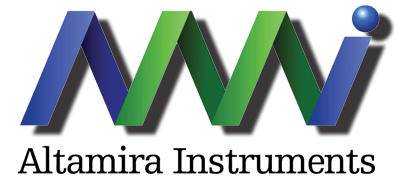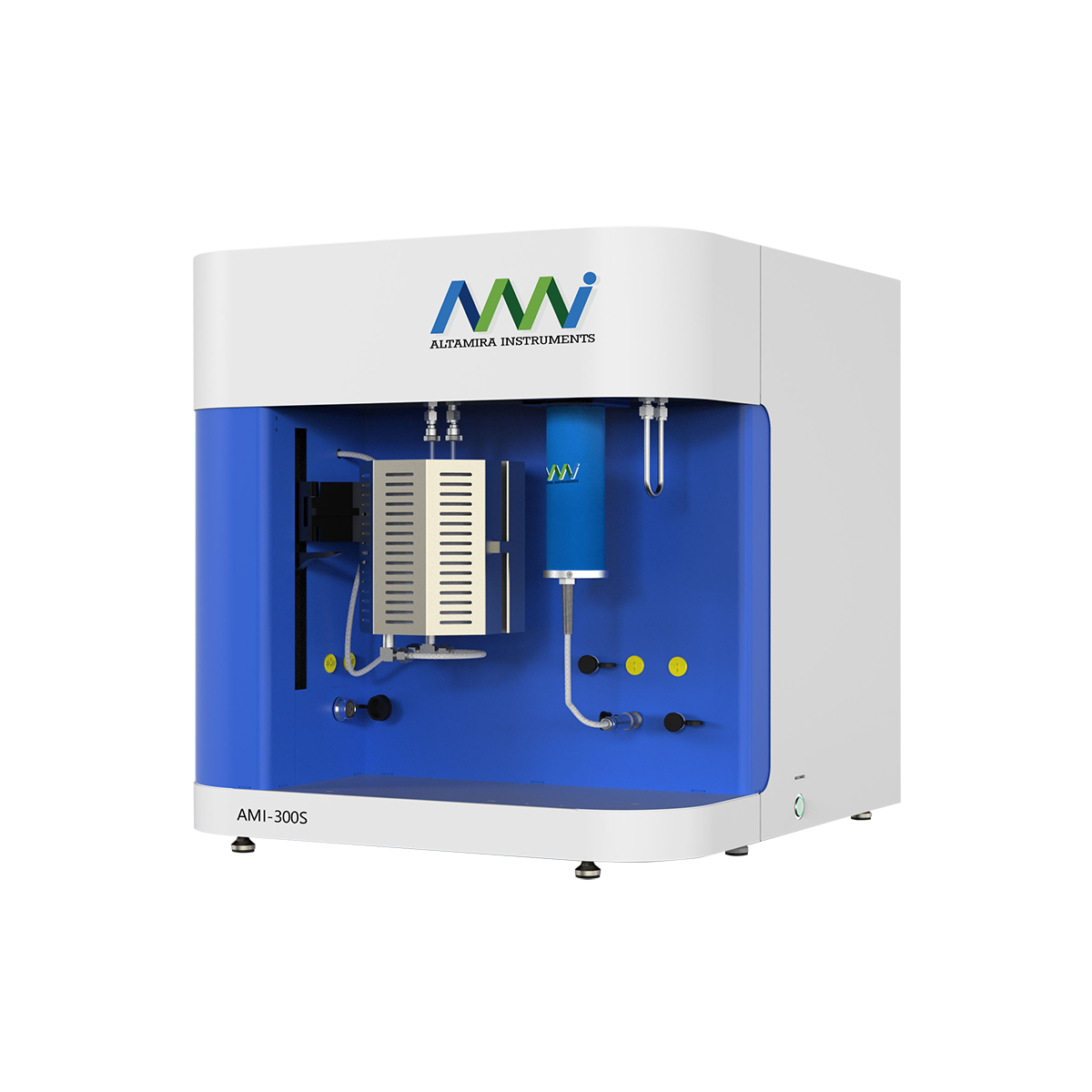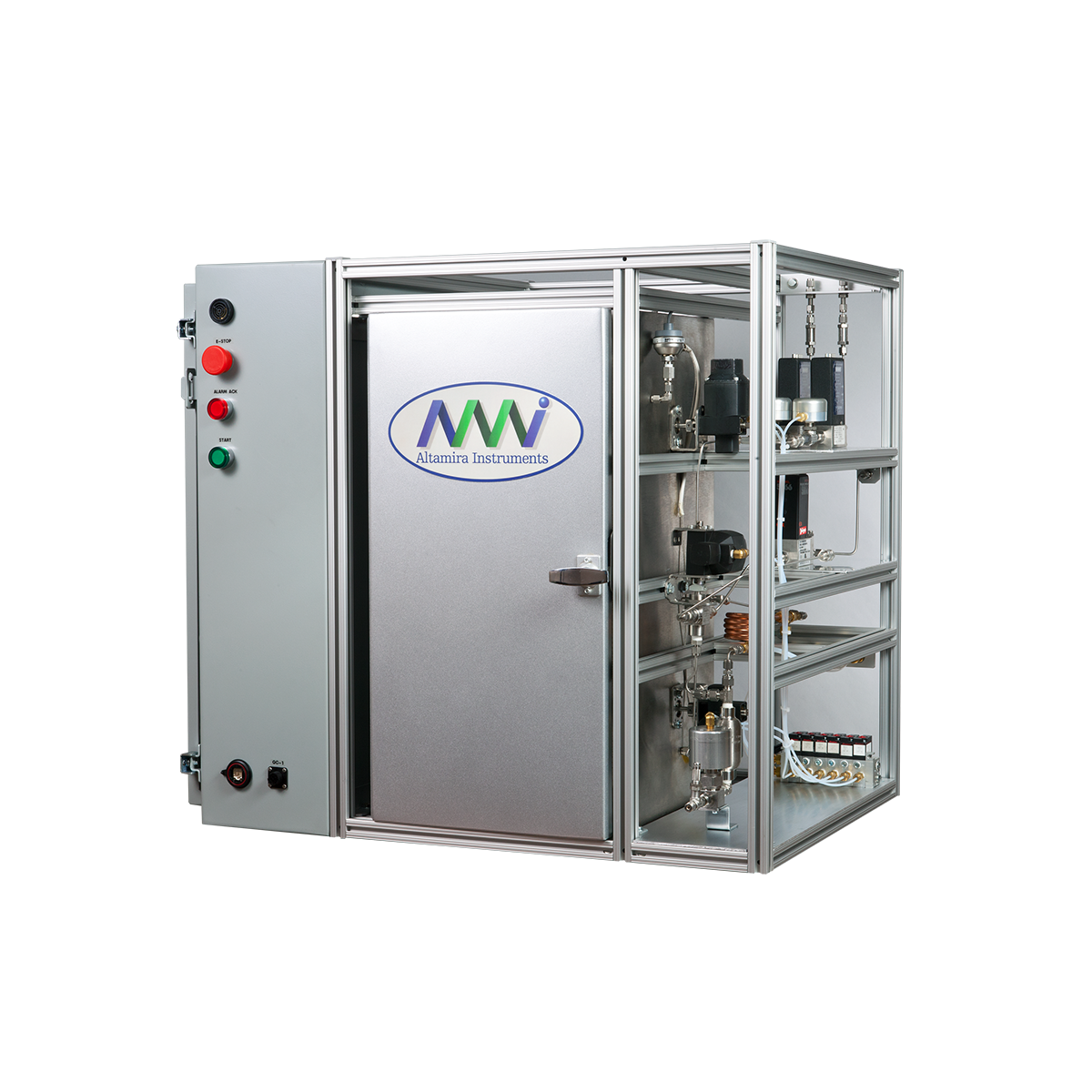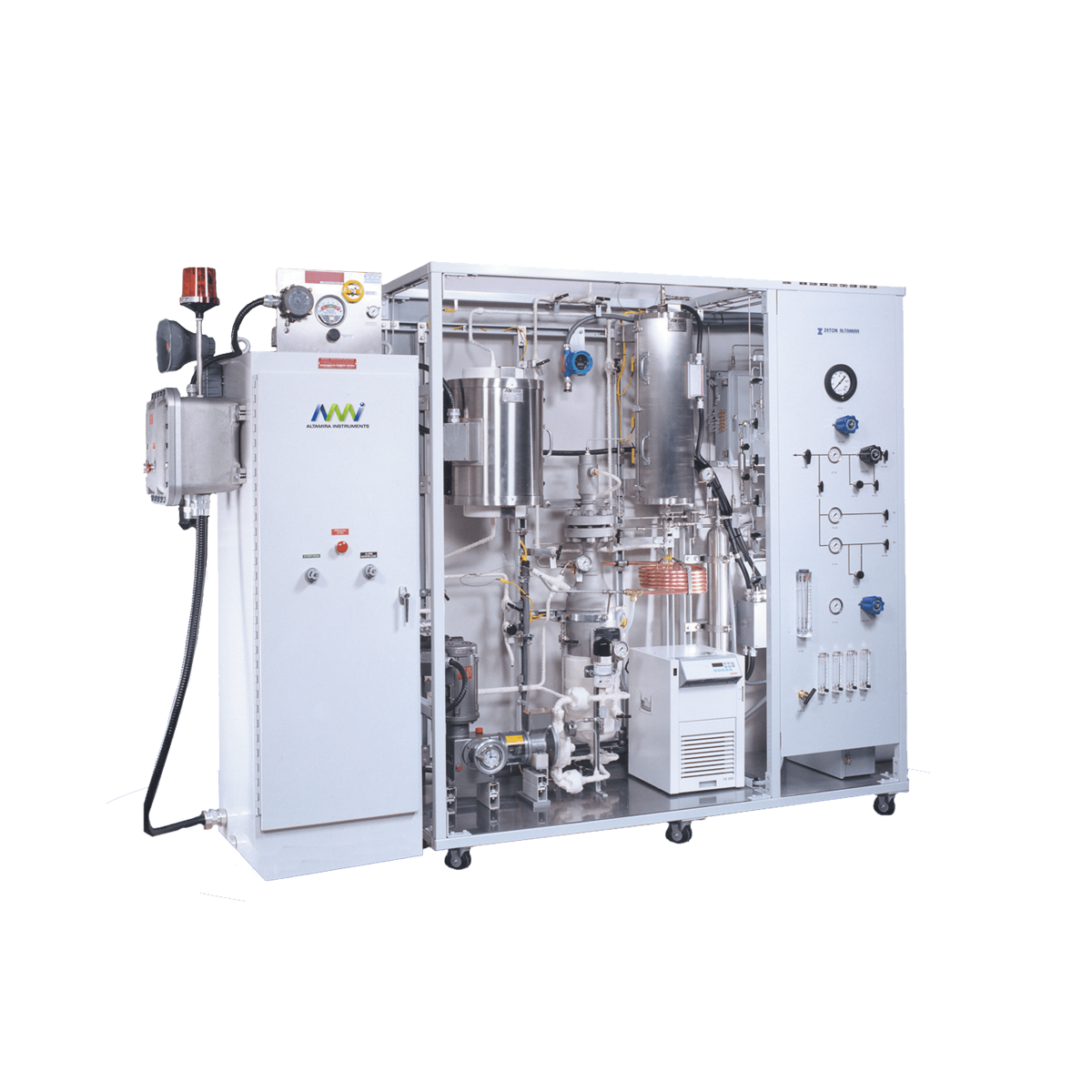Mathematical descriptions of the 3 ideal reactor types are based on essentially nothing more than mass and heat balances. These descriptive equations relate the various parameters of the reaction system such as temperature, reaction rate, conversion, flow rate, and reactor size. While the application of these equations is an integral part of the curriculum of the undergraduate course in reaction engineering taken by chemical engineers, those catalytic scientists without such a background are normally not exposed to the derivation and application of this set of fundamental equations. Yet, anyone involved with catalytic reactions should have such a background. The purpose of this Altamira Note is to show the simplicity of how these descriptive equations are derived.
The 3 ideal types of reactors are:
- BATCH
- CSTR (or back-mixed)
- PLUG FLOW
A BATCH reactor can be represented as in Figure 1. Essentially, it is a reactor that is charged with reactants at time = 0, operated as a closed system except for heat flow during reaction, and maintained in a wellmixed state to minimize gradients of temperature or concentration within the reaction zone.
A CSTR (continuous stirred tank reactor) can be represented as in Figure 2. It is a flow, well-mixed reactor which in the ideal has no gradients within the reactor.
A PLUG FLOW reactor is a flow reactor which can be represented as in Figure 3. It is modeled mathematically as the flow of plugs of fluid through the reactor without any back-mixing whatsoever.
For isothermal operation of a reactor, the normal situation for laboratory reactors, the descriptive equations for the various ideal reactors come from the application of a mass balance over the whole or a differential part of the reactor:
{rate of flow of A in} - {rate of flow of A out} - {rate of disappearance of A by reaction} = {rate of accumulation of A in the system} [I]
where A can be a reactant or a product. The mass balance is always put on a molar basis.
BATCH REACTOR
For a well-mixed batch reactor, the mass balance is simply

where t is the time of reaction, rA the rate of reaction, Vr the reactor or more importantly the reaction volume, and NA the total number of moles of A within the reactor. The rate of reaction is normally expressed in a power law form such as

where k is the rate constant, CA the concentration of A, and n the order of reaction. This power law rate expression is often a function of concentrations of multiple reactants. When that is the case, one relates the concentrations of the various components to that of the one being used as the basis for calculation, in this case A, so that the concentrations can all be related to the % conversion of A.
Since NA = NAi – XANAi, where NAi is the initial number of moles of A in the reactor and XA is the fraction of A converted, equation [II] can be rewritten as
POPRAWI膯 U艁AMKI!!!!!


Batch Reactor [V]
where XAf is the final fractional conversion of A. This is the design equation for a Batch Reactor. Integration of equation [V] requires the expression of all variables in terms of XA. Thus, rA has to be expressed as a function of XA. For the case where

VR is a constant (not a function of XA) where
* the reaction species are all in the gas phase and the reactor is a rigid vessel
or
* the reaction species are all in the liquid phase and there is no volume change on reaction.
Thus, for 1st order, isothermal, constant volume reaction, equation [V] yields
POPRAWI膯 U艁AMKI!!!!!!!!!!!!1



For rA = k CA2

CSTR
For typical operation under steady-state, isothermal conditions, the mass balance in equation [I] reduces for a well-mixed CSTR to


where vi is the initial total volumetric flow rate. This equation can then be written as:

where , the "space time", is the average residence time of an atom in the reactor. Equation [XI] is the design equation for a CSTR. In order to finalize any calculations, one must express rA as a function of XAf.
PLUG FLOW REACTOR (PFR)
For typical operation under steady-state, isothermal conditions, a PFR can also be described simply by a mass balance. For the PFR, it is necessary to integrate over the reactor since by its nature the PFR has significant variations in concentration and rate of reaction from its entrance to its exit. In order to derive the integral equation, a mass balance is written around a differential element which can be considered not to have a gradient (See Figure 4).
Thus,


Equation [XIII] is the Design Equation for a PF reactor.
For a reaction with no change in volume and rA = kCA

Consider a gas phase reaction aA + bB + ... -> rR + sS + ... For a constant pressure reactor, the change in volume on reaction is translated into a change in the volumetric flow rate. This volume change during reaction is given by
POPRAWI膯 ULAMKI!!!

For this situation, equation [XIII] can expressed as follows.
POPRAWI膯 ULAMKI!!!!

For a 1st order reaction such that r

Substituting into equation [XV] the expressions in [XVI] and [XVII], the following equation results:

SUMMARY
An attempt has been made to present the fundamental design/descriptive equations for the 3 ideal reactors. While in all cases reactor volume, VR, was used, for catalytic reactions the amount of catalyst in the reactor determines the rate of reaction, in the absence of non-ideal behavior. Thus, for catalyzed reactions, most often the weight of catalyst. Wc, will be used. This is related to the active volume in the reactor by whatever physical configuration of the catalyst is employed - i.e., fixed bed, slurry phase, etc.
Again, the equations developed have been based on isothermal operation of the reactors. Non-isothermal operation would necessitate a simultaneous solution of both the energy and mass balances. However, since most lab studies are directed towards catalyst development, isothermal operation is the rule rather than the exception due to the greater ease of interpretation of the reaction data.
Further information regarding reactor/reaction engineering can be found in introductory texts such as the following:
Elements of Chemical Reaction Engineering by H. Scott Fogler, Prentice-Hall, Englewood Cliffs, NJ, 1986.
Chemical Engineering Kinetics, 3rd edition, by J.M. Smith, McGraw-Hill Book Company, New York, 1981.
An Introduction to Chemical Engineering Kinetics & Reactor Design by C.G. Hill, Jr., John Wiley & Sons, New York, 1977.
Chemical Reaction Engineering. 2nd edition, by Octave Levenspiel, John Wiley & Sons, New York, 1972.
Fundamentals of Chemical Reaction Engineering by C.D. Holland and R.G. Anthony, Prentice-Hall, Englewood Cliffs, NJ, 1979.
Heterogeneous Reactor Design by Hong H. Lee, Butterworth Publishers, Boston, 1985.
UPCOMING ALTAMIRA RESEARCH NOTES ON CATALYTIC REACTORS
Upcoming Research Notes will address the following topics:
"Laboratory vs. Commercial-Scale Reactors: Compromises for Catalyst and Process Development"
"Introduction to Steady-State Isotopic Transient Kinetic Analysis (SSITKA): A Powerful Technique for the Study of Many Commercial Reactions"
"Application of SSITKA to the Analysis of Catalysts and Reaction Pathways"




